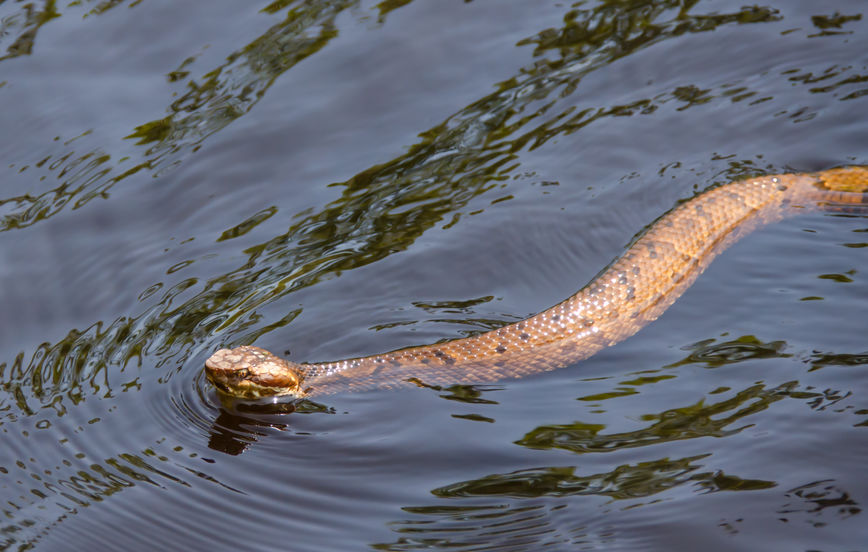Do Poisonous Snakes Swim On Top Of Water Or Under

Yes, venomous snakes can be found swimming on top of water. Most snakes you see swimming on top of water are poisonous.
- All snakes can swim, many swim in same manner.
- Snakes swimming can be looking for food or hiding from a predator.
- Cottonmouths, copperheads, and rattlesnakes can all swim and are venomous.
Recently, the idea that venomous snakes and nonvenomous snakes have different swimming behavior has become increasingly common. A 2017 viral post from a snake removal service is probably responsible for the spread of this supposed rule-of-thumb. The post has been removed, but the misinformation is still frequently found in “how-to” guides online. Unfortunately, these snake behaviors aren’t a reliable tool to determine the venomousness of a snake.
Poisonous snakes can swim on top of water with their heads poking out of the water. Although this does not tell you whether or not the snake is venomous. A common scenario is to get bit in the lower legs while you are wading in water.
Determining which snakes are venomous and which snakes are not venomous is notoriously difficult – every supposed rule has an exception. For example, the nonvenomous milk snake’s coloring mimics the venomous coral snake’s. Many people believe that one can determine if a snake is a dangerous coral snake based on which color bands are adjacent. However, some coral snakes lack banded patterns altogether, rendering this “test” unreliable. Another misconception is that the shape of a snake’s head can indicate if it is venomous. Some nonvenomous snakes flatten their heads when threatened in order to appear venomous. Due to this behavior, head shape does not reliably indicate a snake’s venomousness.
Why Do Venomous Snakes Swim On Top Of Water
The “venomous snakes swim differently” hypothesis suggests that venomous snakes are more buoyant than nonvenomous ones. As a result, they swim with their entire body at the top of the water. A nonvenomous snake will swim with its head above the water, but its body fully submerged. The truth is, this rule-of-thumb is a misconception. It can’t be counted on to determine a snake’s venomousness. Zoologists point out that all snakes are able to swim, and that any snake, regardless of its venomousness, may swim below the water to hide or to hunt.
There is no 100% reliable way for an ordinary person to be certain if a particular snake is venomous. The safest rule-of-thumb in the case of a wild snake encounter is to assume all snakes are dangerous and keep a safe distance away from them. If a snakebite occurs, seeking medical attention is a wiser course of action than trying to recall which side of the water’s surface the snake swam on.
